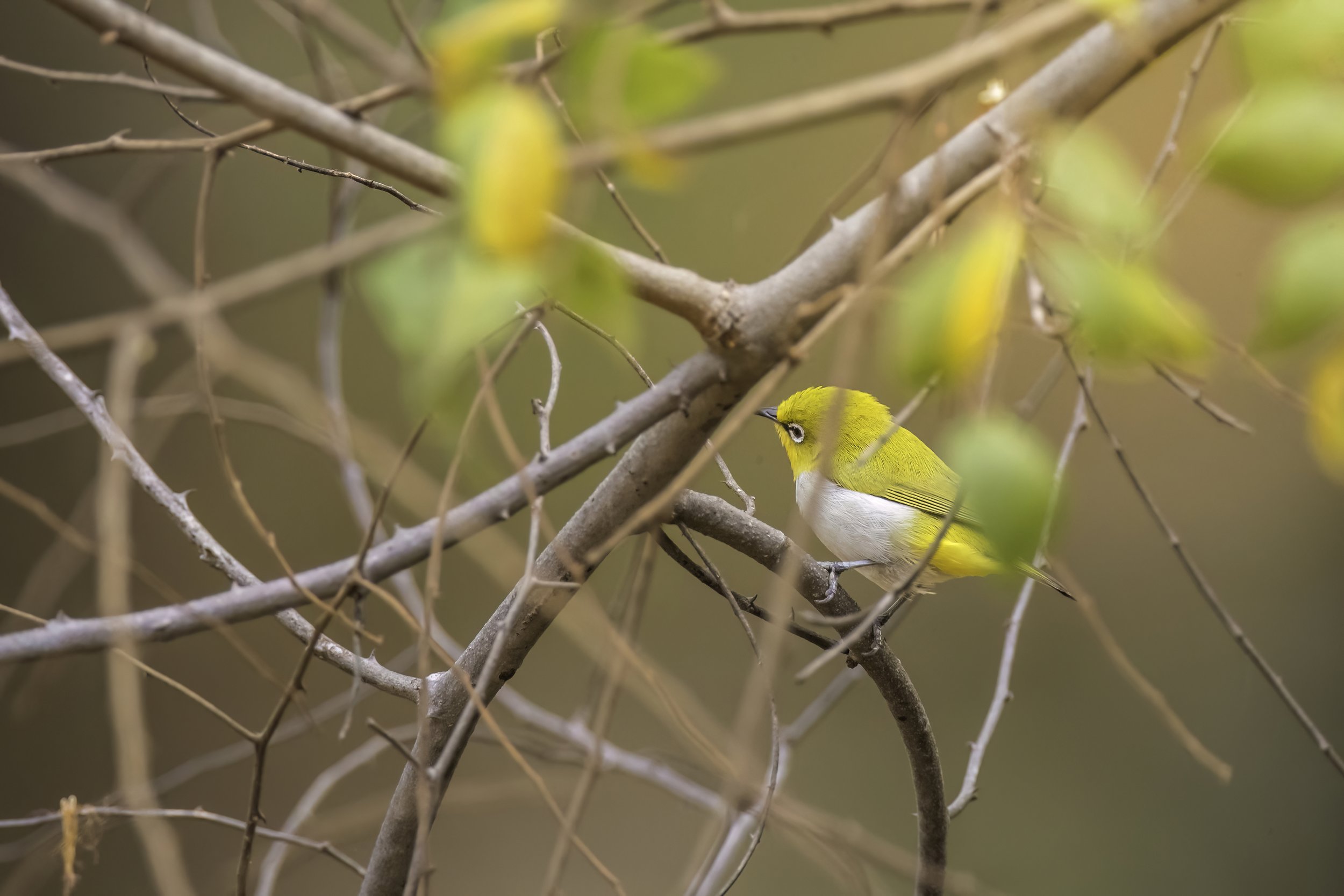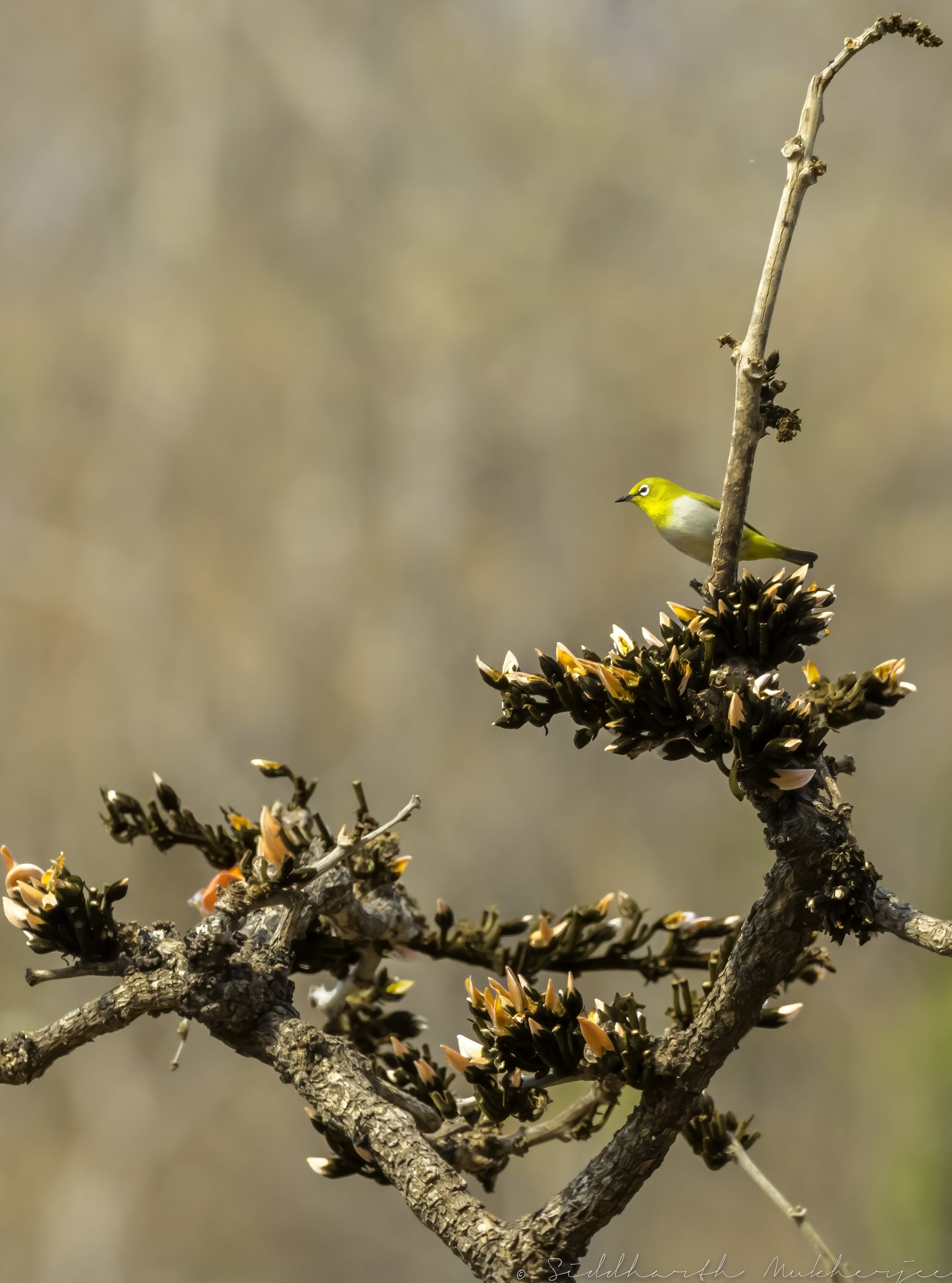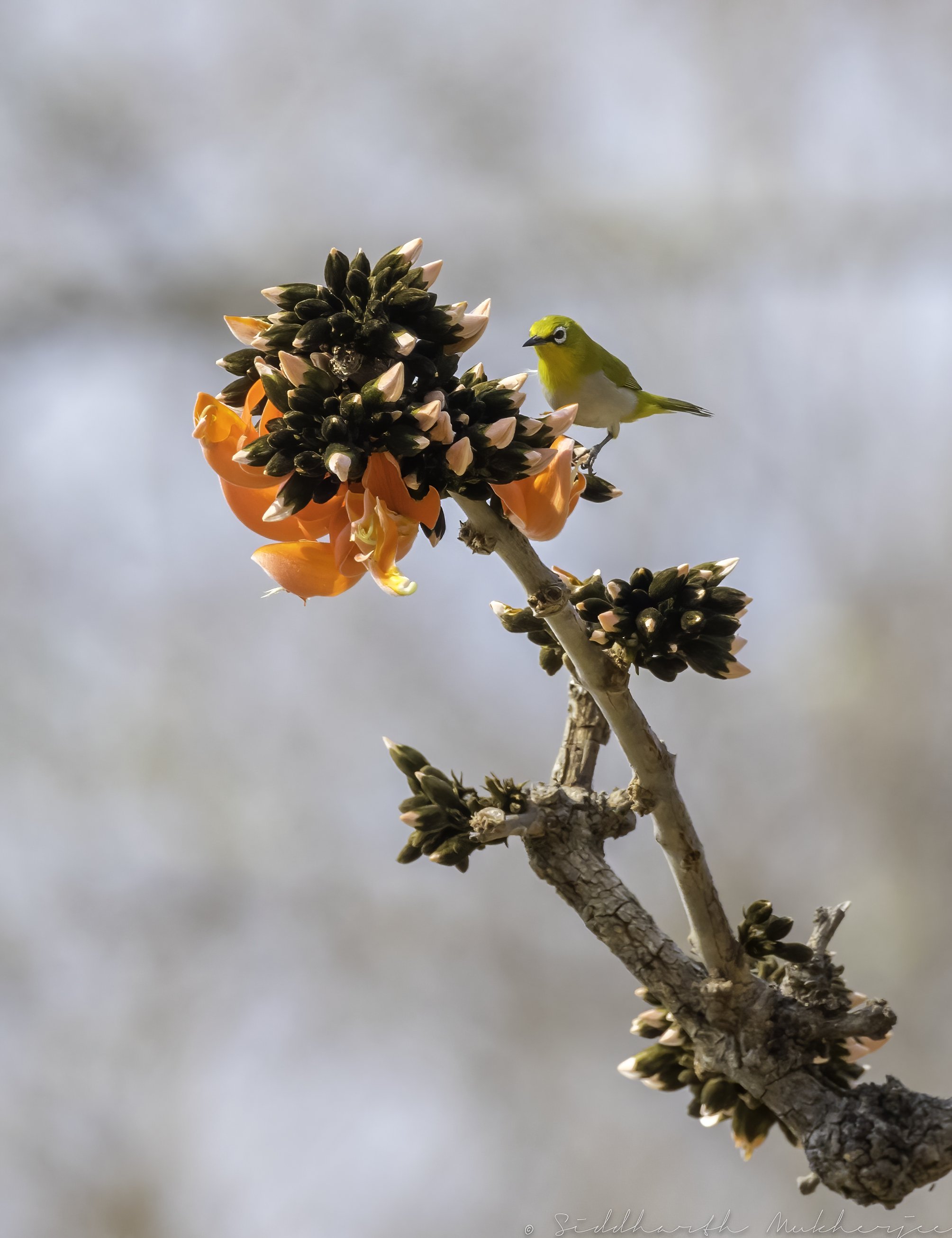Indian White-eye/ Oriental White-eye
Zosterops palpebrosus
Chiang Mai, Thailand
After the Krau Wildlife Reserve in Malaysia we return again to the dois of north Thailand and specifically to Doi Ang Khang in search of the pretty Indian/ Oriental White-eye. Some of the photos here are from the Chincholi Wildlife Sanctuary on the border of Telangana & Karnataka in India.
To read about the earlier birds of the Dois click the links below:
About 685 kilometers to the north of Bangkok lies the former seat of the ancient Lanna Kingdom & is considered one of the most scenic provinces in the country given its mountain ranges, valleys, flora and fauna. A land of misty mountains and colourful hill tribes, a playground for seasoned travellers, and a delight for adventurers. Despite its relatively small size and blissful calm, Chiang Mai truly has it all, a city that is still firmly Thai in its atmosphere and attitude. It is the second-largest changwat (province) of Thailand. Bordered by Chiang Rai to the northeast, Lampang and Lamphun to the south, Tak to the southwest, Mae Hong Son to the west and the Shan State of Myanmar to the north. Located in a verdant valley on the banks of the Ping River, Chiang Mai was founded in 1296 as the capital of the ancient Lanna Kingdom. Today it is a place where past and the present seamlessly merge with modern buildings standing side by side with venerable temples. Of all the places I have visited in Thailand, Chiang Mai with its forests and mountains and the historic city of Ayutthaya are by far my favourites.
The Chincholi Wildlife Sanctuary was declared a sanctuary in 2011 and extends over 134.88 km². It is the first dry land Wildlife Sanctuary in South India. This is the only area in the Hyderabad Karnataka Region with rich floral biodiversity. Apart from medicinal herbs and trees, species like the Red Sanders and Sandalwood are found abundantly. The Sanctuary has good dry deciduous and moist deciduous forest in the core with Acacia and Teak plantations on the fringes. Apart from the Chandrampally dam, four small dams exist at its Centre. The forest is also home to fauna like the Black Buck, Common Fox, Four-horned Antelope, Fruit bat, Hyena, Indian Wolf etc. Over 35 species of birds, including Black Drongo, Black-winged Kite, Blossom-headed Parakeet, Blue pigeon, Black-headed Oriole and Grey partridge are also found. Chincholi is also home to the Lambani Tandas, a protected tribal community that lives locally in the forests in harmony with nature.
I had the good fortune to work with the Forest Range officer stationed here at the time and was able to document almost 35 species of birds.
Doi Angkhang, Chiang Mai, Thailand
Indian/ Oriental White-eye, Ananthagiri Forest Range, Telangana
The word Chiang itself is from North Thai, or Lanna, meaning town or city and Mai means new making Chiang Mai the New City as it was founded later than Chiang Rai, the earlier capital of King Meng Rai. The districts in the province are called amphoe, and sub-districts are called tambon. Another twist is the use of Nakhon (or Nakorn or Nakhorn), derived from the Sanskrit word Nagara, also means city, though strictly speaking it refers to a capital city such as Nakorn Sri Ayutthaya (more on Ayutthaya later). Indeed to emphasise its former status you may sometimes see Chiang Mai referred to as Nakhon Ping. Other common names of geographical features include mae (river) and doi which is north Thai for mountain - for example Doi Inthanon and Mae Ping.
The four Dois we spent our time on were Doi Inthanon, Doi Ang Khang, Doi Luang and Doi SanJu.
Doi Ankhang is a mountain belonging to the Himalayan foot hill range, located at the Myanmar (Burmese) border. The highest point is 1,928 metres. Although chiefly deforested, this is still one of Northern Thailand’s most prominent birdwatching areas, due to more and rarer bird species being in residence, as well as being a popular resting point for numerous migratory birds. Examples of rare and beautiful birds inhabiting this area include the Spot-breasted Parrotbill and the Red-faced Liocichla. A highly recommend site to find the rarest bird species is the picturesque area named Heavenly Valley. It is not so uncommon to spot the Red-tailed Laughing Thrush here. Around The Royal Agricultural Project Station you can find Brown, Burmese and Long-tailed Shrike and also Fire-capped Tits and Silver-eared Mesia, White – tailed Robin & Maroon Oriole.
We didn’t have the good fortune to see all the species on all the mountains, that would have been impossible, but we did rack up quite a number of species - about 95 of them. The gallery today is of the pretty Oriental White-eye seen quite easily around the Royal Agricultural Station at Angkhang.
‡‡‡‡‡
For a print of the beautiful birds from the Dois click on the button below to read my process and order a limited edition canvas.
‡‡‡‡‡
Some of my photos were painted by the renowned Macedonian painter Simonida Filipova Kitanovska, a professional painter from Skopje, North Macedonia. She has exhibited her watercolours including the ones of my birds at various locations around the globe. To view her watercolours of my birds click on the button below.
‡‡‡‡‡
Oriental White-eye
The Oriental white-eye (Zosterops palpebrosus) is a small passerine bird in the white-eye family. It is a resident breeder in open woodland in tropical Asia, east from the Indian subcontinent to Southeast Asia, extending to Indonesia and Malaysia.
They forage in small groups, feeding on nectar and small insects and are easily identified by the distinctive white eye-ring and overall yellowish upperparts. Several populations of this wide spread species are named subspecies and some have distinctive variations in the extent and shades of yellows in their plumage.
The white-eye is small (about 8–9 cm long) with yellowish olive upper parts, a white eye ring, yellow throat and vent. The belly is whitish grey but may have yellow in some subspecies. The sexes look similar. The species is widespread and is part of a superspecies complex that includes Zosterops japonicus, Zosterops meyeni and possibly others.
The taxonomy of the group is still unclear with some island populations being distinctive while some subspecies are not well supported. The population from Flores, Indonesia for instance is found closer to the pale white-eye. The family itself is now questioned since they are nested along with the Stachyris babblers. About eleven subspecies are well recognised. These include the nominate form (type locality Bengal, India) which is found from Oman & Arabia, Afghanistan, northern India and extends into China and northern Myanmar. The population in the Western Ghats and hills of southern India is placed in nilgiriensis while salimalii of the Eastern Ghats hills (Shevaroy, Chitteri, Seshachalam, Nallamalai) is sometimes subsumed into the nominate race.
The population of the plains of India, Laccadives and Sri Lanka are sometimes placed in egregius (= egregia) but is restricted by other works to the population in Sri Lanka. The populations in southern Myanmar, Thailand and Laos are placed in siamensis. The Nicobar Islands form is nicobaricus and is sometimes also used for the population on the Andaman Islands which are however distinctive and a distinct unnamed population. The populations from southern Thailand to western Cambodia are placed in williamsoni. Other Southeast Asian island forms include auriventer (=aureiventer), buxtoni, melanurus and unicus. Race occidentis (now often subsumed into the nominate race) of the Western Himalayas has the upper side dark green and the flanks are tinged in brown. The form salimalii has a shorter bill and is brighter yellow-green above. Some authors consider the nominate race to be restricted to Sikkim, Bhutan, Assam and Yunnan and consider the peninsular race as occidentis (or amabilis if the form from Kathiawar described by Koelz is considered valid). In Sri Lanka, race egregia is smaller and has a brighter back and throat than the endemic Sri Lanka white-eye, Zosterops ceylonensis found in the central hills. The English and scientific names refer to the conspicuous ring of white feathers round the eyes, zosterops being Greek for 'girdle-eye'.
The Oriental White-eye Zosterops palpebrosus has been split into Indian White-eye Z. palpebrosus, Hume's White-eye Z. auriventer and Sangkar White-eye Z. melanurus on the basis of thorough morphological comparisons (Wells et al. 2017a, b) and genetic differentiation, morphology and vocalisations (Round et al. 2017, Lim et al. 2019).
Z. p. unicus has been transferred to Ashy-bellied White-eye Z. citrinella, and Z. p. wiliamsoni has been transferred to Swinhoe's White-eye Z. simplex (Handbook of the Birds of the World and BirdLife International 2019) following genetic analysis by Lim et al. (2019).
The species is found in a wide range of habitats from scrub to moist forest. They sometimes occur on mangrove areas such as in the Karachi area. and on islands they may lead a more insectivorous life. They are somewhat rare only in the drier desert regions of western India. A feral population was detected in San Diego, California in the 1980s and subsequently eradicated. These white-eyes are sociable, forming flocks which only separate on the approach of the breeding season. They are highly arboreal and only rarely descend to the ground. The breeding season is February to September but April is the peak breeding season and the compact cup nest is a placed like a hammock on the fork of a branch. The nest is made of cobwebs, lichens and plant fibre built in about 4 days and the two pale blue eggs are laid within a couple of days of each other. The eggs hatch in about 10 days. Both sexes take care of brooding the chicks which fledge in about 10 days.
Though mainly insectivorous, the Oriental white-eye will also eat nectar and fruits of various kinds. They call frequently as they forage and the usual contact call is a soft nasal cheer. They pollinate flowers when they visit them for flower insects (such as thrips) and possibly nectar (questioned) that form their diet. The forehead is sometimes coloured by pollen leading to mistaken identifications. They have been observed bathing in dew accumulated on leaves. When nesting, they may mob palm squirrels but being small birds they are usually on the defensive. Their predators include bats (esp. Megaderma lyra) and birds such as the white-throated kingfisher. Endoparasitic Haemosporidia of the genus Haemoproteus and Dorisa have been isolated from the species although these rarely cause death. Like some other white-eyes, they sometimes steal nest material from the nests of other birds. Cases of interspecific feeding have been noted with white-eyes feeding the chicks of a paradise flycatcher. Although not strong fliers, they are capable of dispersing in winds and storms to new areas including offshore islands. A feral population of this species established itself in California during the 1980s requiring their capture and destruction. They were captured by luring them using call playback and live decoys into mist nets.
‡‡‡‡‡
Related Posts


















